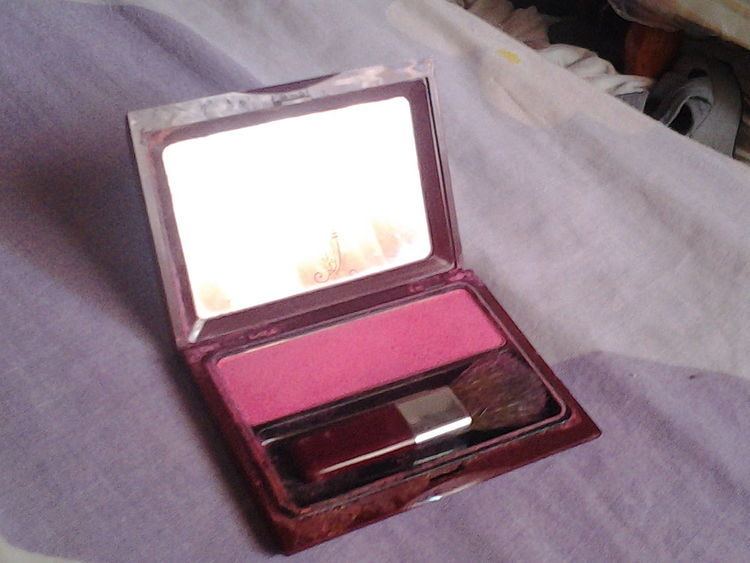 | ||
Rouge (/ˈruːʒ/; French: red), also called blush or blusher, is a cosmetic typically used by women to redden the cheeks so as to provide a more youthful appearance, and to emphasize the cheekbones.
Contents
History
Rouge was used as early as in ancient Egypt. It was also applied on the lips, the way lipstick would be used today. In some times and places, such as the English Regency, both men and women wore rouge. In Britain in the late Victorian Age, wearing visible makeup such as rouge was associated with low morals. Ladies resorted to pinching their cheeks (and biting their lips) to make them appear red instead.
Various substances have been used as rouge. In ancient Greece for example, crushed mulberries were favoured, while red beet juice, crushed strawberries and red amaranth have also variously been used.
Contemporary
Modern rouge generally consists of a red-coloured talcum-based powder that is applied with a brush to the cheek. The colouring is usually either the substance of safflor (the petals of safflower), or a solution of carmine in ammonium hydroxide and rosewater perfumed with rose oil. A cream-based variant of rouge is schnouda, a colourless mixture of Alloxan with cold cream, which also colours the skin red.
Pressed-powder
The majority of blushes found in drugstore or high-end stores are in the form of pressed-powder. The blush lies flat on the pan, unlike baked blushes. These are best suited for people with oily skin. Using a pressed-powder blush for people with dry skin is not recommended because the powder might cling to dry patches of their skin. Pressed-powder blushes usually last long on the skin, are easily blended and are very buildable. For these reasons, pressed powder blushes are usually used by makeup artists during special occasions like weddings or events that project harsh lighting. Pressed-powder blushes come in many finishes, including matte, shimmer and satin.
Cream
Cream blushes usually come in a short, round container, much like a lip balm or solid perfume. These blushes are best suited for people with dry skin. Cream blush is typically blended using fingers or a stippling brush. Since the nature of the blush is a cream, it can be layered with a powder blush to improve longevity of use.
Mineral baked
Mineral baked blush can be differentiated from pressed-powder blushes mainly because of its appearance on the pan. It is luminous, has shimmery veins and shaped like a dome. Mineral baked blushes are made from a liquid that is baked into solid form. This means that there is less talc and more pigment. Because it is originally liquid form, spraying the pan with water can make the blush creamy and more opaque. However, it does change back to its solid form when it dries. Mineral baked powder is very sheer when applied, but is buildable and can be the perfect choice for someone who is going for a more flushed and natural look.
